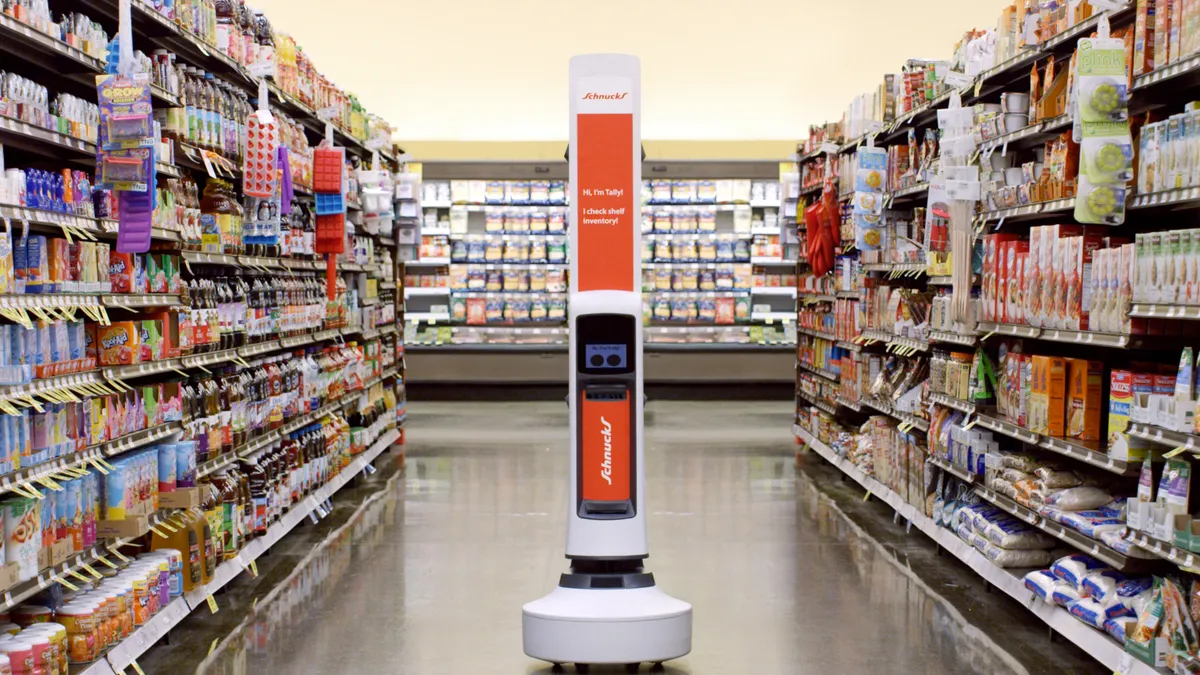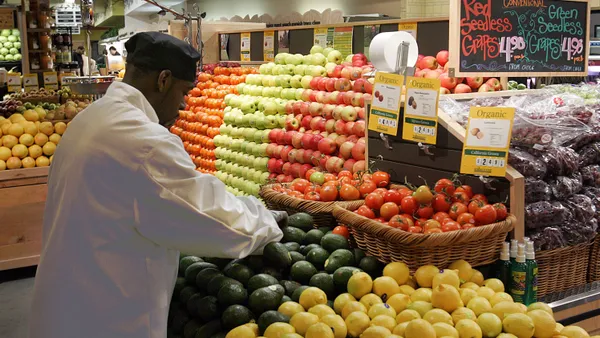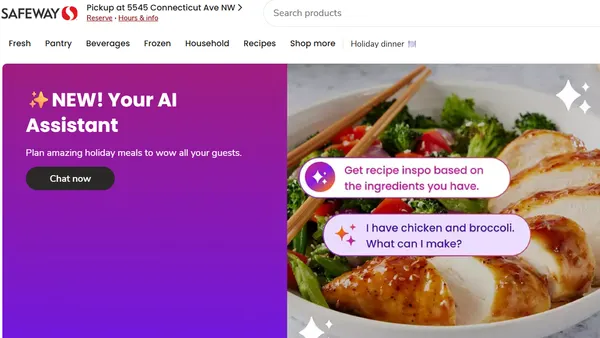Dive Brief:
- Schnuck Markets is continuing its robot fleet expansion, unveiling on Wednesday plans to bring "Tally" to 46 new locations, according to a press release. As the name suggests, the robots scan products on store shelves and identify items that need to be replenished.
- The 112-store Midwestern grocer first began testing the autonomous devices, which are provided by San Francisco-based Simbe Robotics, in 2017. Currently, 16 stores employ the robots.
- Schnucks is also using the robots to provide specific information about where products are located to Instacart shoppers and customers who use the supermarket chain’s mobile app.
Dive Insight:
For supermarket employees trying to keep track of thousands of individual products on store shelves and quickly replace items that run out, Simbe’s Tally robots are a sight for sore eyes.
Equipped with sensors that record the contents of grocery shelves from top to bottom, the devices scoot around stores on their own, said Dave Steck, vice president of IT infrastructure and development for Schnucks.
A single robot assigned to a store can identify up to 14 times as many out-of-stock items as a human worker and has the ability to easily see items on high and low shelves that may be difficult for a person to access, Steck said. That allows associates in Tally-equipped stores, who would have otherwise have had to manually look for items that need to be replaced, to instead spend their time working with customers or bringing products from the backroom to store aisles.
“It’s putting a focus on getting the product to the shelves instead of putting the focus on looking for the hole in the shelf,” Steck said.
The robots are so efficient that Schnucks had to switch from alerting associates whenever an item needs to be replenished to providing a daily inventory report.
“We found that if we were telling the store team the moment the robot saw there was an out-on-shelf that we were kind of demoralizing them because we were sending so many out-on-shelf notifications they felt like they couldn’t keep up,” said Steck.
Beyond tracking inventory levels, the ability of a single Tally robot to rapidly record specific location data for virtually every item available on a store’s shelves is paying dividends for Schnucks’ e-commerce operations. The chain is providing those coordinates to Instacart for integration into the app shoppers use as they move around a store to fill orders, allowing them to gather items sequentially aisle-by-aisle, according to Steck.
Brad Bogolea, founder and CEO of Simbe, said the company sees its ability to map and track inventory in supermarkets as a way for it to enhance grocery e-commerce and has had what he described as “exploratory work” with companies in the space.
“We see this type of information actually being a necessity for online grocery to be profitable at scale,” Bogolea said.
At the heart of the robots’ ability to accurately track inventory is artificial intelligence that constantly improves as the robots travel around stores, added Bogolea. That enables all of the robots Simbe has deployed to retailers to sharpen their skills based on what each device learns.
Simbe’s robots have been deployed to stores run by about a dozen other retailers in six countries. In addition to Schnucks, Tally devices are at Giant Eagle supermarkets in Akron, Ohio; Cleveland and Pittsburgh, as well in grocery stores run by companies Simbe has not identified. The company is also working with retailers outside the grocery industry.










